R134a is used as a working fluid in a cooling system with a cooling capacity of 50 kJ/s operating according to the ideal vapor compression refrigeration cycle. The refrigerant enters the compressor as saturated steam at a pressure of 120 kPa and is compressed to a pressure of 650 kPa. The mass flow of R-134a is 0.10 kg/s. If an isentropic turbine is used instead of the throttle valve in the cooling system, what is the efficiency coefficient of the system?
R134a is used as a working fluid in a cooling system with a cooling capacity of 50 kJ/s operating according to the ideal vapor compression refrigeration cycle. The refrigerant enters the compressor as saturated steam at a pressure of 120 kPa and is compressed to a pressure of 650 kPa. The mass flow of R-134a is 0.10 kg/s. If an isentropic turbine is used instead of the throttle valve in the cooling system, what is the efficiency coefficient of the system?
A-3,689
B-3.215
C-4.513
D-3.245
E-4.123
(Note: This question is Turkish) orginal question:
İdeal buhar sıkıştırmalı soğutma çevrimine göre çalışan soğutma kapasitesi 50 kJ/s olan bir soğutma sisteminde iş akışkanı olarak R134a kullanılmaktadır. Soğutucu akışkan kompresöre 120 kPa basınçta doymuş buhar olarak girmekte ve 650 kPa basınca sıkıştırılmaktadır. R-134a’nın kütlesi debisi 0.10 kg/s’dir. Eğer soğutma sistemindeki kısılma vanası yerine izantropik bir türbin kullanılırsa sistemin etkinlik katsayısı ne olur?
The cooling capacity of the system is given as,

The conditions of the refrigerant at the compressor inlet,
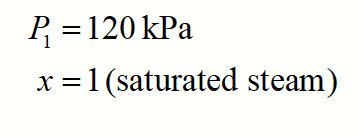
On using R-134a table, and calculate enthalpy and temperature at the compressor inlet
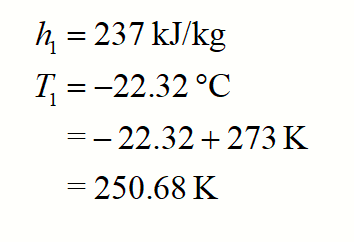
The temperature of the fluid after compression,
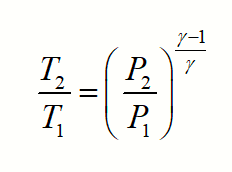
The specific heat ratio for R-134a is 1.20.
So,
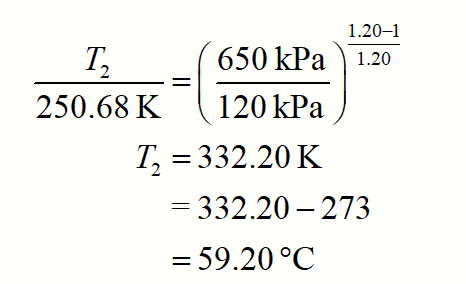
On using R-134a table, the enthalpy at P2=650 kPa,
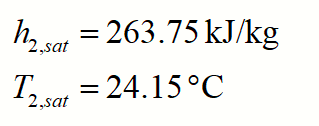
Enthalpy at point of compressor exit,

Step by step
Solved in 2 steps with 9 images









